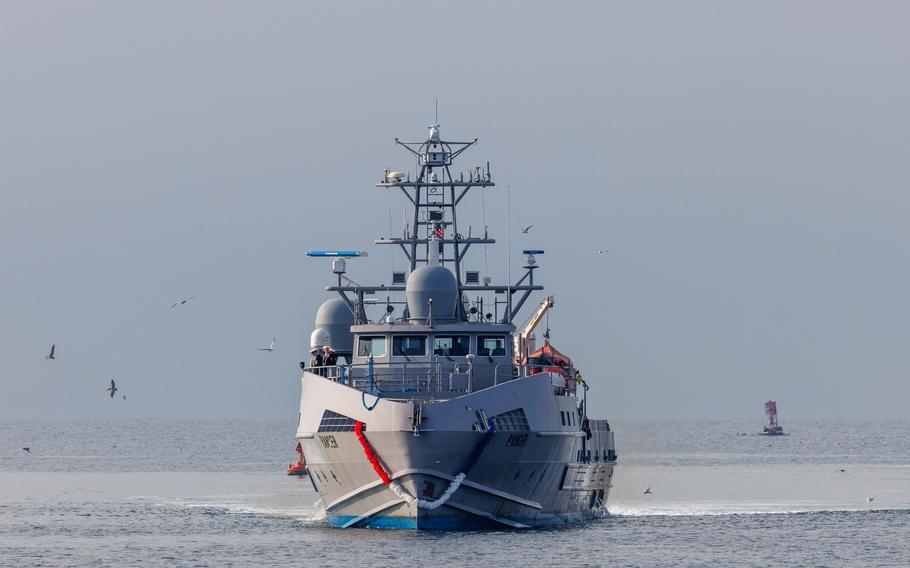
The sea drone Ranger returns to its homeport, Naval Base Ventura County, in Port Hueneme, Calif., following an exercise in January 2024. The Navy is looking to industry for a wide range of new drones. (Gavin McKenna/U.S. Navy)
The U.S. Navy said this week that it wants new ideas from industry on how it can ramp up production of unmanned attack vessels, marking the latest push by the service to incorporate more sea drones into the fleet.
The Navy issued a solicitation for companies to submit proposals for an array of modular sea drones that leverage cutting-edge technology and can counter evolving threats.
Proposed solutions will be “swiftly” prototyped, the Navy said. The aim is for the sea drones to “seamlessly maneuver with other Navy surface vessels or operate independently.”
The Navy is seeking three unmanned systems with varying capabilities, payloads and ranges, but did not specify a timeline for deployment.
Drone warfare has featured prominently in the Russia-Ukraine war, which the Pentagon has studied closely for lessons from the ongoing conflict.
While most of the fighting has involved ground forces and their deployment of drones to take out opposing troop formations and combat vehicles, Ukraine also has used unmanned systems at sea.
At the start of the full-scale war in 2022, Ukraine possessed only a small navy. But the country’s creative use of sea drones enabled Kyiv to destroy numerous Russian warships and force the Kremlin to pull back its naval position in the Black Sea.
The approach has highlighted the risks unmanned systems pose to larger navies. But it also has put a spotlight on how such systems could help the U.S. Navy better counter China’s fast-growing fleet in the Asia-Pacific region.
“There is a mismatch between the U.S. Navy force structure and the requirements posed by (China’s) posturing,” stated a July 17 report by the Rand Corp., which asserted that the Navy lacks sufficient ships to meet its global security commitments.
To address its unmanned vessel needs, the Navy should use the domestic industrial base “to the extent that it can,” but also consider tapping into the ship-construction capability of countries such as South Korea, Japan and Germany.
“If the U.S. industrial base does not support the requirement, there are options with its partners and allies,” the report said.